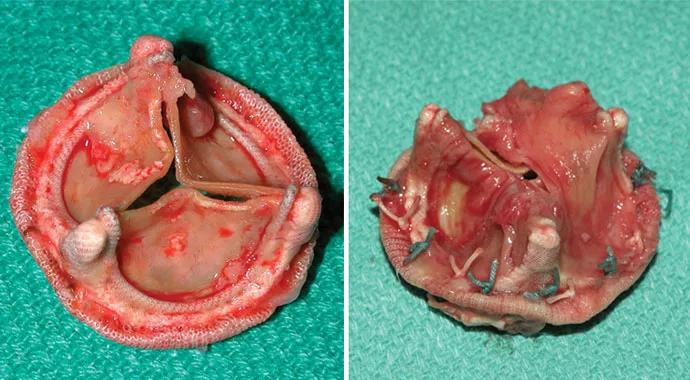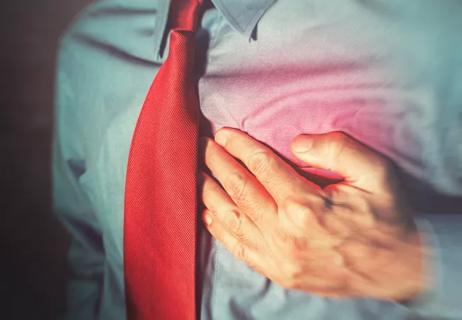Advertisement
Tissue destruction differs dramatically by organism

Advertisement
Cleveland Clinic is a non-profit academic medical center. Advertising on our site helps support our mission. We do not endorse non-Cleveland Clinic products or services. Policy

The organisms causing infective endocarditis are not equally destructive or invasive, as made clear by the four images above.
The explanted tissue valve in Panel 1 was infected with a less-aggressive organism such as an Enterococcus species. Such organisms are generally minimally invasive, causing formation of small vegetations, with recurrent episodes of sepsis.
In contrast, aggressive organisms, such as Staphylococcus aureus, can cause rapid, extensive tissue destruction, usually within a few weeks, with formation of large vegetations. Panels 2 to 4 show a tissue valve (2) and a mechanical valve (3) infected by S. aureus and extensive tissue destruction with aortic root abscess (4) caused by S. aureus prosthetic valve endocarditis.
Additional revealing image series are available in the atlas of infective endocarditis published in the April 2014 Journal of Thoracic and Cardiovascular Surgery by Cleveland Clinic cardiothoracic surgeons Gösta Pettersson, MD, PhD, and Syed Hussain, MD, and detailed here on Consult QD.
“The atlas presents major concepts that collectively describe the main features and basic facts about endocarditis every surgeon needs to know,” Dr. Pettersson says.
The concepts are:
Advertisement
Contact Dr. Pettersson at petterg@ccf.org and Dr. Hussain at hussais2@ccf.org.
Advertisement
Advertisement

Further acute testing not needed if ECG and high-sensitivity troponin are negative

Scott Cameron, MD, PhD, also brings wide-ranging research interests to bear

Pioneering U.K. vascular surgeon joins Cleveland Clinic

AHA statement is first comprehensive document on perioperative stroke reduction

Recognition reflects prioritization of long-term patient outcomes

Recommendations help distinguish exercise-induced remodeling from pathology

JACC review highlights factors unique to women, ways to tailor management

Pushing the envelope in ablation of atrial fibrillation, ventricular tachycardia